Turkeys are fascinating birds and people love to learn about them. They’ve become an icon of Thanksgiving in the United States and, whether Ben Franklin really thought so or not, they would have made a fine national bird. No disrespect intended to the bald eagle.
And yet as turkeys get bolder in encounters at suburban and natural areas, many wonder if wild turkey restoration (and introduction) was too successful. Especially so in states like Oregon, where the turkey is not a native species.
Conservation non-profit Greenbelt Land Trust (Greenbelt) hosts a citizen science turkey count at Bald Hill Farm Conservation Area (Bald Hill Farm). The turkey count is part of a multi-year bird assessment by Greenbelt, the American Bird Conservancy, and the Oregon Department of Fish and Wildlife (ODFW) to better understand how birds are responding to habitat restoration.
How Did Turkeys Get to Oregon?
Some private individuals attempted to release turkeys as game birds in southern Oregon in 1899, but they didn’t survive. Early attempts by the Oregon Game Commission from 1926-1933 similarly failed.
Having learned from the success of other states that the speed of catch and release was important when translocating turkeys, in 1961 ODFW had its first success establishing a population of turkeys from the Merriam’s subspecies. In 1975, the Rio Grande subspecies was released in Oregon. Most of the turkeys in Oregon today are Rio Grande or Rio Grande-Merriam’s hybrids.
Rio Grande turkeys are adaptable and will eat just about anything. Today there are an estimated 40,000 turkeys in Oregon and populations continue to expand. According to Kelly Walton, a Game Bird Biologist for ODFW who joined us for the count, turkeys in the state are managed for balance. ODFW’s goal is to keep enough turkeys that people have opportunities to watch, photograph and hunt them; without letting their numbers go unchecked.
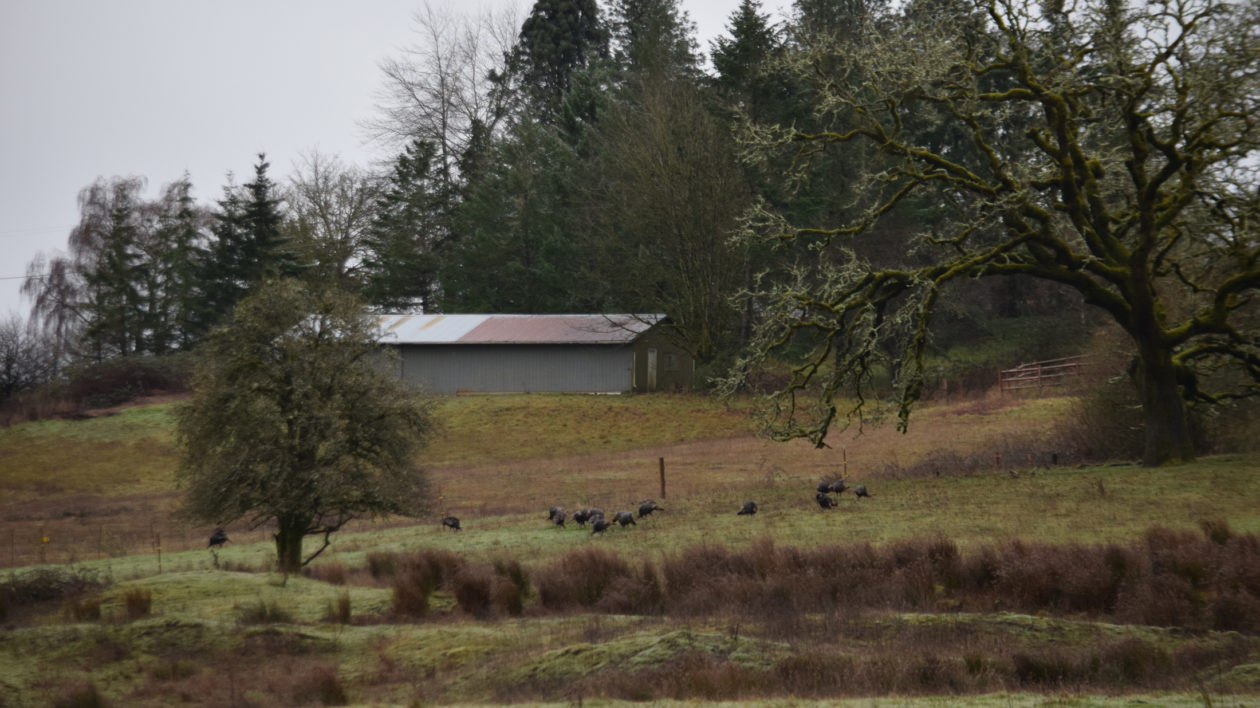
Counting the Turkeys of Bald Hill Farm
Bald Hill Farm currently has an estimated population of around 150 Rio Grande turkeys. Anecdotal evidence suggests that the turkey population at the site has been growing since the Land Trust acquired this historic farm in 2013 and began restoring the land to native habitats.
“The turkeys are just ‘chillin at this point,” says Elizabeth Records a land steward for Greenbelt. She notes that that decisions on how to manage turkeys will be informed by answering more questions about their population and diet at Bald Hill Farm.
Citizen scientists are helping answer these questions about the size and growth of the population. Greenbelt staff and partners plan to follow up with research to understand whether turkeys are eating rare species.
As we pull up to the shed where citizen scientists are gathering, I can already see a flock of around 15 turkeys hanging out nearby. They’re making it too easy.
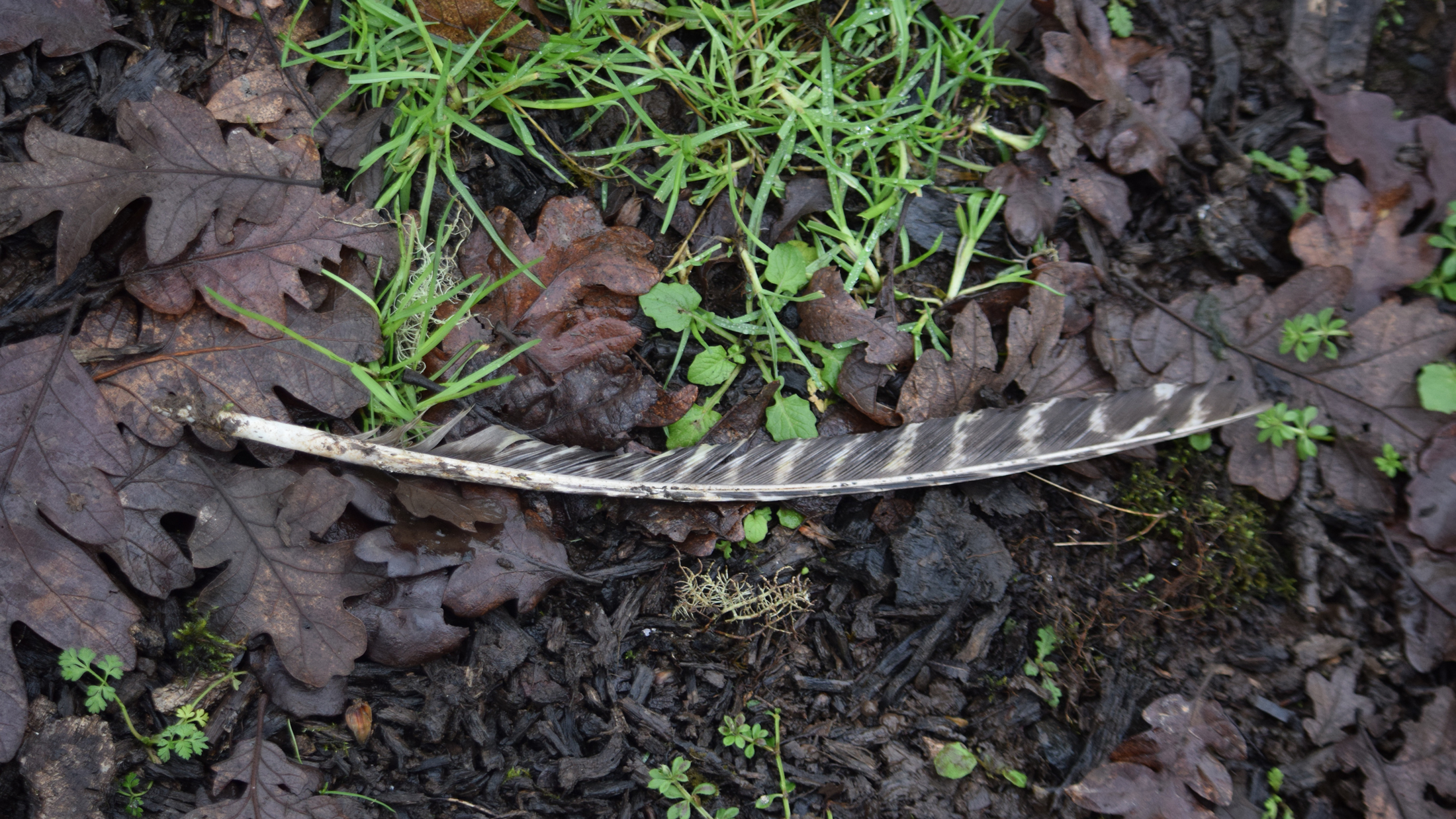
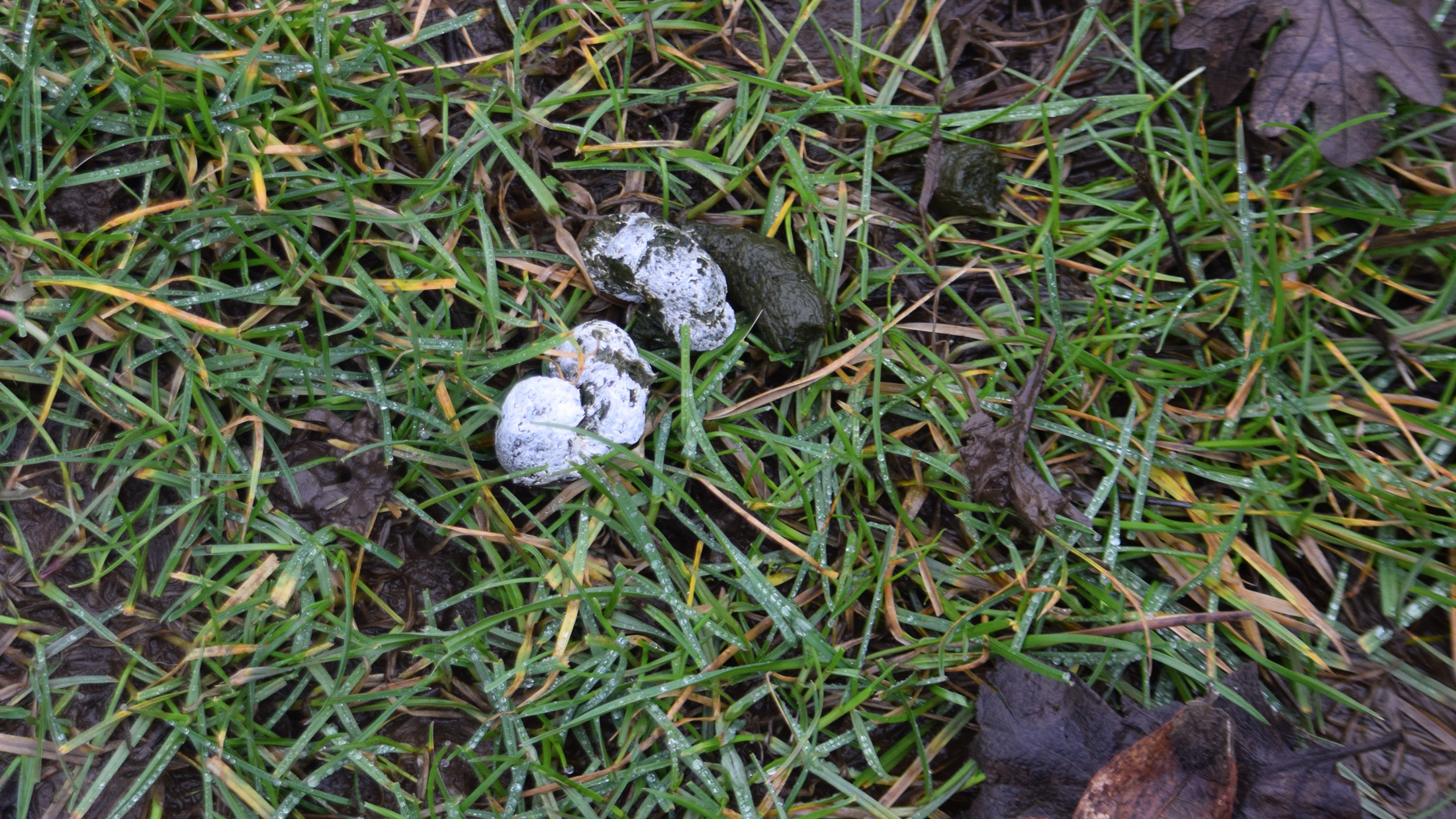

Over coffee and donuts, we split into five groups. Each group gets a data sheet and a map. We’re assigned a color-coded zone to check for turkeys. A navigator keeps the group from wandering outside our zone (or counting turkeys outside of our zone, so two groups don’t count the same set of turkeys). An observer has the final word on the group’s turkey tally and a recorder enters the number. The data sheet has room for adding notes about behavior or other wildlife sightings.
My group has an area near the shed, near where I saw turkeys before the count began. When we leave the shed and begin to walk our territory, I realize that those turkeys are just on the other side of the fence – in another group’s territory.
We walk through a gate and I notice turkey tracks in the mud – yes! The turkeys were here.
Our assigned area is a pasture (part of Bald Hill Farm is still used for cattle grazing) and the terrain is easy to cover. There is a small child in our group and his parents let him walk partway. We head out over a hill watching for turkeys and avoiding cow patties.
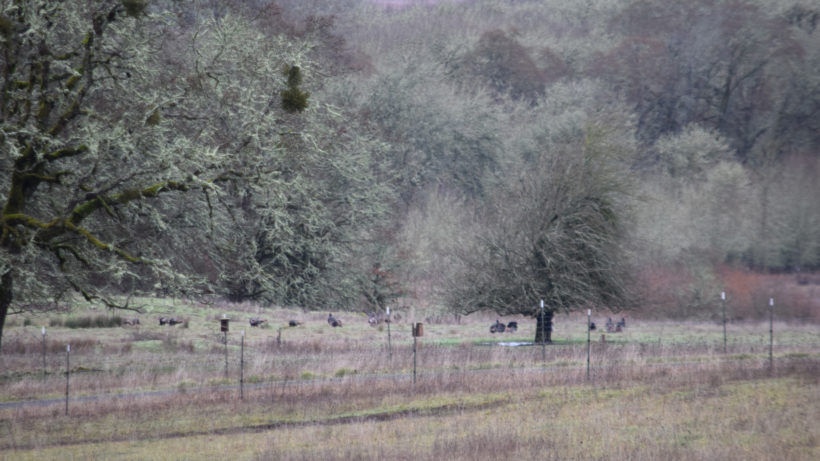
On the journey out and downhill we spot two mule deer and two red-tailed hawks, but no turkeys on our side of the fence. We do see plenty of scat – surely the turkeys are nearby.
On the way back, we see a vole flash past and stop to admire a beautiful old oak tree. We never find turkeys, but we have a great time searching – a perk of outdoor citizen science projects.
We return to the shed early – two hours is the maximum time for counting, but groups can finish early as long as they’ve covered their entire plot. Records shows me where the turkeys roost and we find a turkey feather there. Then we hear a strange sound coming from the direction of the shed – it’s gobbling, but more gobbling than I’ve ever heard before.
We return to see a massive flock of turkeys, there must be at least 80, amassing on a wooded hillside near the shed. All groups have now returned to the shed and get to enjoy the spectacle – I don’t envy the group that had to count such a large moving flock.
All told this year’s turkey count reported 115 birds (and there are likely more that we didn’t see).
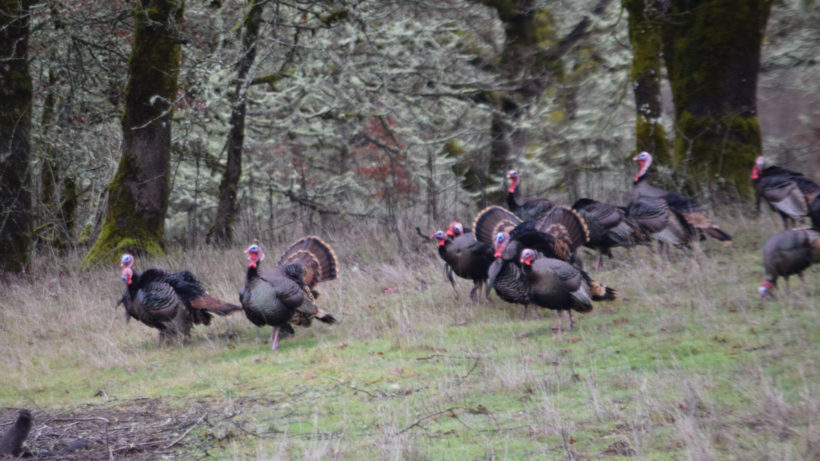
What Happens Now?
The results of the citizen science count and other turkey observations may impact the future management of turkeys on Bald Hill Farm. Particularly if the turkeys are shown to have a negative impact on native species.
A management plan for the conservation area does not currently allow hunting. An option remains to allow hunting in the future, if needed, to manage species that negatively impact conservation. This may apply to turkeys if they are found to feed on rare wildlife or plants at Bald Hill Farm.
Bobcats and coyotes do not eat many turkeys, so these big introduced gamebirds have few natural predators at Bald Hill Farm. This lack of predators allows large flocks to grow. With turkeys’ varied diets, these large flocks could drive down numbers of plants, amphibians, ground-nesting birds and other small animals by eating them or competing for food.
One species of concern, the Oregon vesper sparrow is listed as sensitive in Oregon. There is a petition to list it as endangered or threatened under the federal Endangered Species Act. They nest on the ground where their nests could be vulnerable to turkeys. To be clear, Greenbelt Land Trust has been monitoring the Oregon vesper sparrow population at Bald Hill Farm and, so far, there is no evidence of turkey predation. More data is needed.
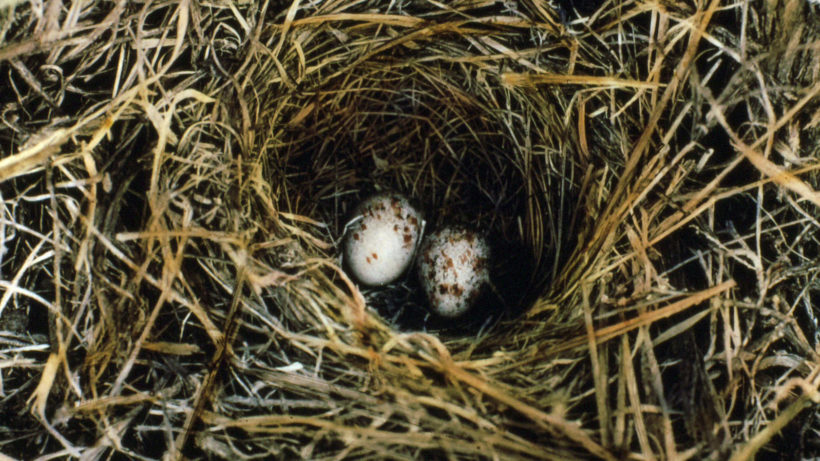
Turkeys may also be eating rare plant seeds used in habitat restoration projects on Bald Hill Farm. These seeds are expensive, and Greenbelt is working with finite resources.
If Greenbelt finds that the turkeys are eating rare plant seeds or – perish the thought – preying on Oregon vesper sparrows, they will revise their plan for managing turkeys. Options might include carefully managed hunting, translocating turkeys or frightening them away from sensitive areas.
“Any management needs to be responsive to the many conservation values at this multipurpose site, which contains rare habitats, is near public trails and residences, and is used for education and research,” Records explains. “Management decisions will need to be conscientiously chosen and citizen science data contribute to making those decisions as informed as possible.”
Data from the 20 citizen scientists who joined today, and many more to come in future years, will play a key role in this decision. Citizen science provides opportunities to answer essential questions about how people – and the non-native species we’ve introduced – affect oak savannas, prairies and streams. There are many environmental citizen science projects to join here in Oregon and in your neighborhood.
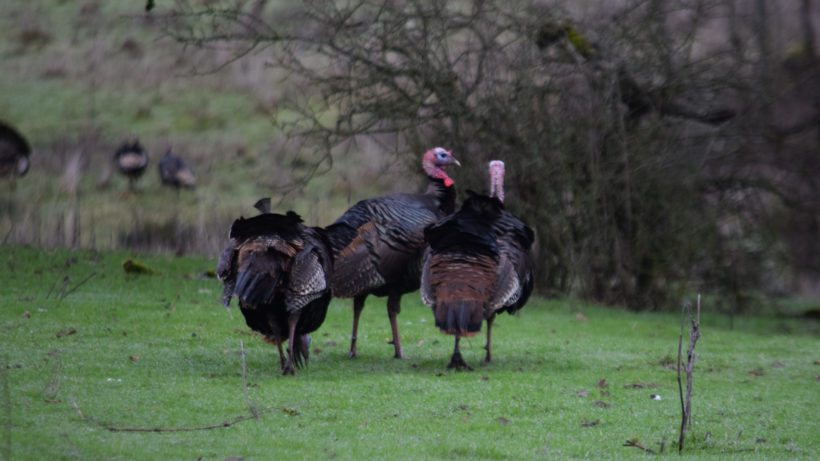
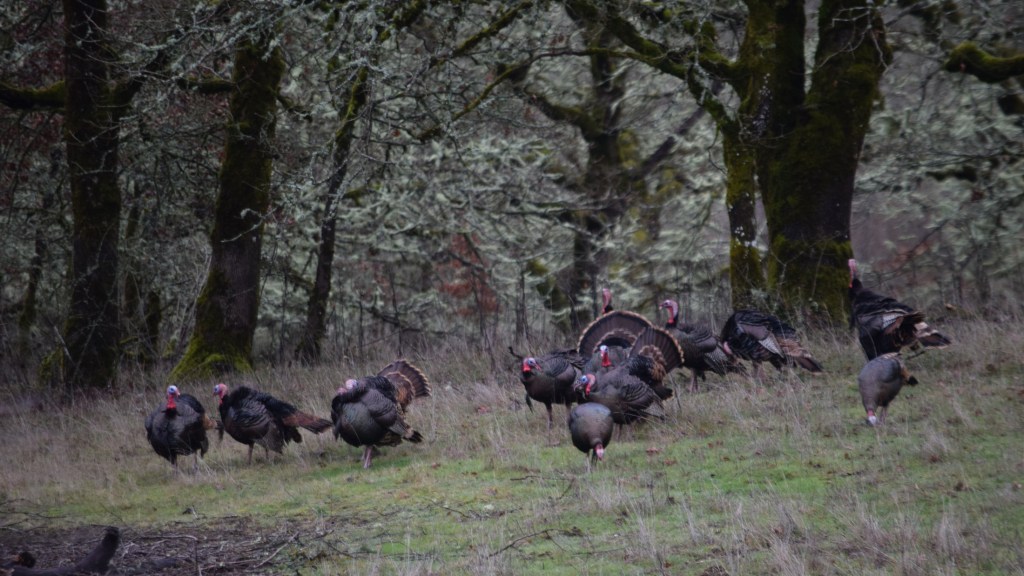



They are starting to repopulate the are up here in northwest IN got a lot of pictures of them
I’m really happy you are doing this. Turkeys are in our neighborhood in Philomath and have been problematic. Not as bad as they used to be, feeding has been reduced or stopped and the city police started to control numbers a few years ago, but the numbers are growing again. The birds have lost their wildness, being predator free. Good luck at BH, I hope they will not effect Vesper Sparrows. My advice would be not to wait to see if there is a problem, but be preemptive. It might be too late by the time you can determine their impact.
I enjoyed learning a bit more about turkeys. There are so many in my area – Cave Junction and Kerby, Oregon, and I see flocks of as many as 15-25 occasionally on my property, pecking and passing through. One thing that concerns me about the turkeys is that they are mating with peacocks, and the flocks we see are usually half turkey and half peaturkeys. Several people in this area raise peacocks and apparently don’t have confined enclosures.
Hi Mary, Thank you for the interesting question! I am checking with Kelly Walton of ODFW to see if this is a concern.
Hi Mary, I reached out to Kelly Walton with ODFW and she says “It is highly unlikely that [turkeys and peacocks] will mate and produce offspring. Apparently during courtship they may show interest in each other, but if eggs are produced they will not likely be viable. My main concern with pen-raised peacocks coming into contact with turkeys would be the possibility of disease transmission. We advise people not to let pen-raised birds come in contact with wild birds. Wild birds that appear healthy may be carriers of diseases that could be very harmful to pen-raised birds.” From what I have read elsewhere, sometimes when people see female peacocks (peahens), they think that they are peacock-turkey hybrids because of their vibrantly colored heads and brown bodies. Here’s a picture of a peacock and peahen: https://en.wikiquote.org/wiki/Peafowl#/media/File:Peacock_courting_peahen.jpg Thank you for the comment!